Articles > Geography
Know Ukraine Largest Cities? Here are the top 25 to get you started.
1. Kyiv (Population: 2,962,180)
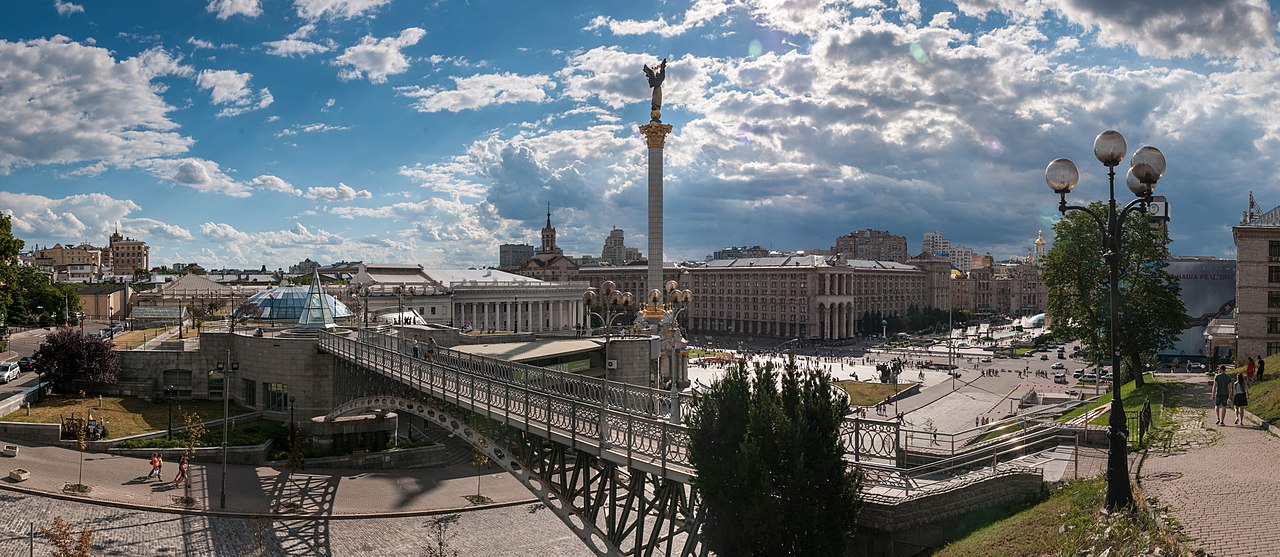
Kyiv, the capital of Ukraine, is the nation’s cultural, political, and economic heart. Situated on the Dnipro River, it boasts a rich history dating back more than 1,400 years, blending ancient architecture with modern skyscrapers. Famous landmarks include the Kyiv Pechersk Lavra, a UNESCO World Heritage site, and Saint Sophia’s Cathedral. Today, Kyiv is a dynamic metropolis with vibrant nightlife, universities, theaters, and museums. Its extensive metro system and central role in commerce make it one of Eastern Europe’s most important hubs. Despite modern challenges, the city remains a symbol of resilience and identity for Ukraine. Parks and wide boulevards balance its urban density, giving residents and visitors open spaces to enjoy.
Interesting Fact:
The Kyiv Metro station Arsenalna is the world’s deepest, reaching 105.5 meters underground.
2. Kharkiv (Population: 1,433,886)
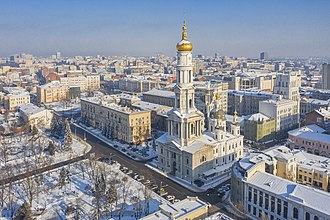
Kharkiv, located in northeastern Ukraine, is the country’s second-largest city and a major industrial and educational hub. Known for its Soviet-era architecture and broad avenues, the city played a central role during Ukraine’s industrial development. Today, it is home to numerous universities and research centers, earning it a reputation as a city of students. Freedom Square, one of the largest city squares in Europe, symbolizes Kharkiv’s grand scale. The city’s industries include machinery, aerospace, and electronics, contributing significantly to Ukraine’s economy. Cultural life thrives through theaters, art galleries, and music festivals. Despite challenges during recent conflicts, Kharkiv has remained a vital part of Ukraine’s spirit and innovation.
Interesting Fact:
Kharkiv was the first capital of Soviet Ukraine, holding that role from 1919 to 1934.
3. Odesa (Population: 1,015,826)
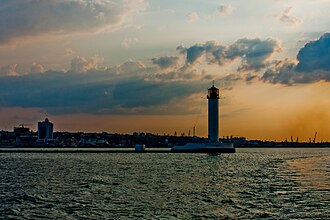
Odesa, Ukraine’s third-largest city, lies along the Black Sea coast and is one of the country’s most important ports. Founded in the late 18th century, Odesa developed as a cosmopolitan city with a mix of Ukrainian, Russian, Jewish, and Greek influences. Its architecture reflects this diversity, with iconic landmarks like the Potemkin Stairs and the Odesa Opera House. Today, the city is known for its beaches, seaside boulevards, and lively nightlife, making it a top tourist destination. Economically, Odesa is a major trade hub, handling grain exports and other goods vital to Ukraine’s economy. Its rich cultural life includes film festivals, theaters, and museums. The city’s humor and unique local dialect are also celebrated across Ukraine.
Interesting Fact:
The Potemkin Stairs were designed to create an optical illusion: from the bottom, only steps are visible, and from the top, only landings.
4. Dnipro (Population: 980,948)
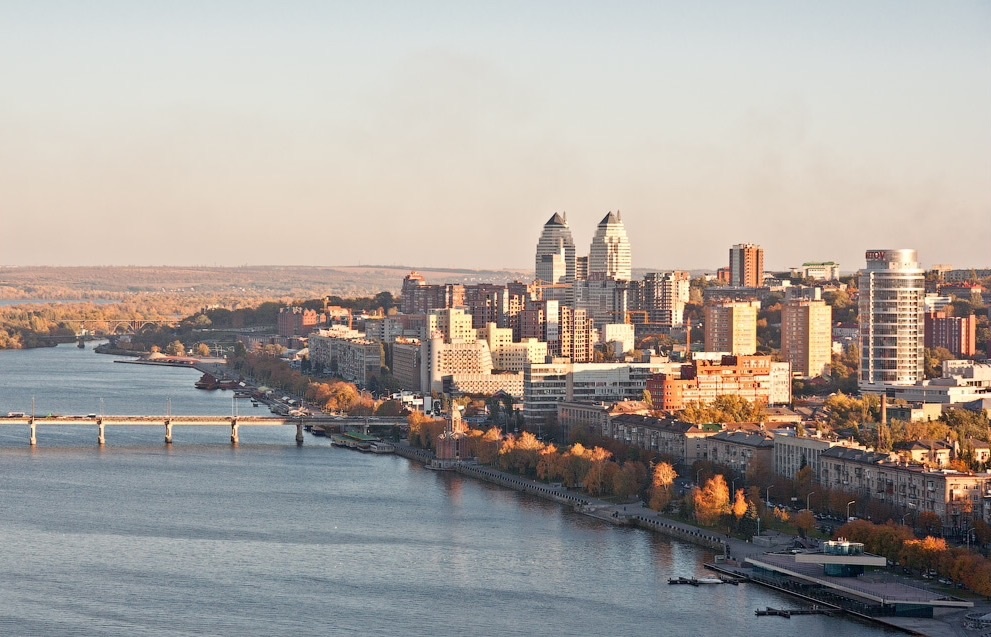
Dnipro, located along the Dnipro River, is one of Ukraine’s most important industrial cities. Historically, it was a key center for Soviet aerospace and military production, with factories and research institutes dedicated to space technology. Today, Dnipro remains a powerhouse for metallurgy and engineering, while diversifying into finance and IT. The cityscape blends wide boulevards, modern architecture, and leafy parks. Monastyrsky Island offers recreational spaces in the middle of the river. Cultural attractions include museums, theaters, and a vibrant culinary scene. Dnipro’s location in central Ukraine makes it a transportation hub, connecting eastern and western regions. Its strong industrial legacy continues to shape its identity while supporting modern development.
Interesting Fact:
Dnipro was once a closed city during the Soviet era due to its strategic aerospace facilities.
5. Donetsk (Population: 905,364)
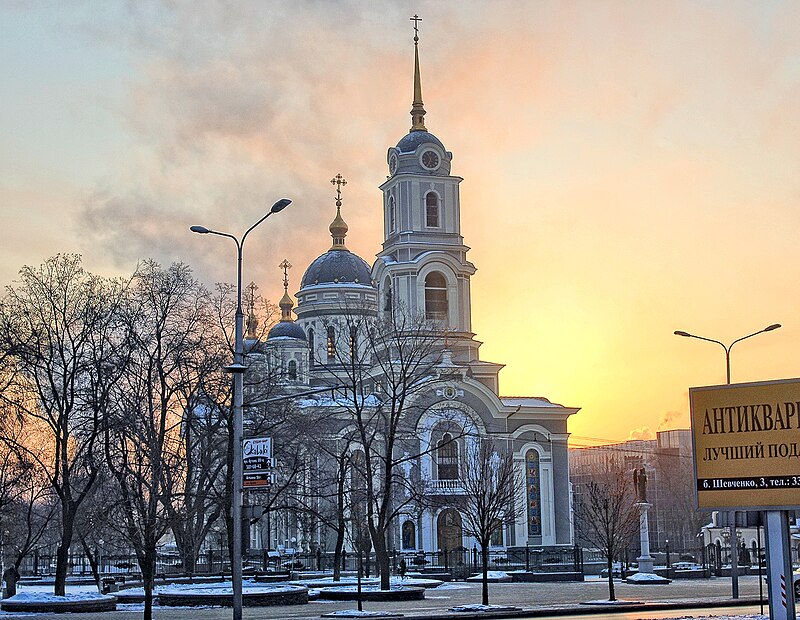
Donetsk, in eastern Ukraine, has long been recognized as a center for heavy industry, particularly coal mining and metallurgy. Established in the late 19th century by Welsh industrialist John Hughes, the city rapidly expanded during the Soviet period into one of Ukraine’s industrial giants. Its wide boulevards and Soviet-era architecture reflect its planned development. Sports also play a key role in Donetsk’s identity, with Shakhtar Donetsk football club bringing international recognition. Cultural highlights include theaters, opera houses, and the Donetsk Regional Museum. Although the city has faced major disruptions during recent conflicts, it retains symbolic importance as an emblem of Ukraine’s industrial past.
Interesting Fact:
Donetsk was originally called Yuzovka, named after its Welsh founder, John Hughes.
6. Zaporizhzhia (Population: 722,713)
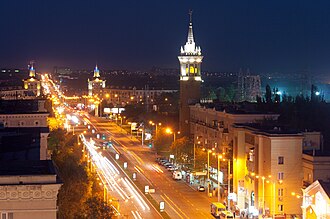
Zaporizhzhia, located along the Dnipro River, is known for its massive hydroelectric dam and strong industrial base. The DniproHES power plant, completed in the 1930s, was a monumental Soviet project and remains a symbol of the city. Zaporizhzhia also has a rich Cossack heritage, with Khortytsia Island nearby serving as a historic stronghold of the Zaporizhian Cossacks. Today, the city blends industry with culture, housing theaters, museums, and parks. Its factories produce vehicles, aircraft engines, and metals. Despite its industrial image, Zaporizhzhia offers scenic river views and opportunities for boating and fishing. It is both a key energy producer and a cultural landmark in Ukraine’s development.
Interesting Fact:
Khortytsia Island is the largest island in the Dnipro River and an important Cossack heritage site.
7. Lviv (Population: 721,510)
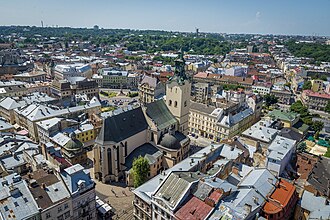
Lviv, in western Ukraine, is widely regarded as the country’s cultural capital. Founded in the Middle Ages, it has long been a crossroads between Eastern and Western Europe, reflected in its diverse architecture and cultural influences. The city center is a UNESCO World Heritage Site, filled with cobblestone streets, ornate churches, and historic cafés. Lviv has a vibrant coffeehouse culture and is home to festivals celebrating music, literature, and film. Universities and art institutions give the city a youthful energy. While it has a smaller industrial base compared to eastern cities, Lviv thrives on tourism, education, and technology. Its European feel makes it one of Ukraine’s most visited destinations.
Interesting Fact:
Lviv’s first coffeehouse opened in the 18th century, sparking the city’s famous coffee culture.
8. Kryvyi Rih (Population: 612,750)
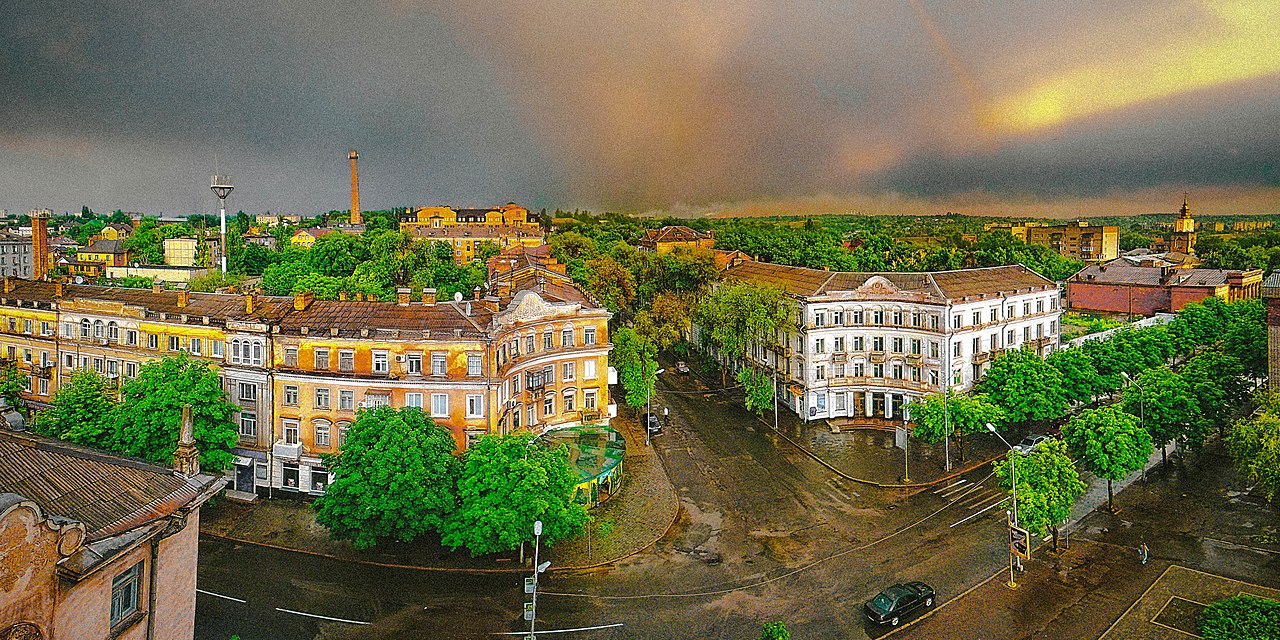
Kryvyi Rih stretches across more than 120 kilometers, making it one of the world’s longest cities. It is the heart of Ukraine’s iron ore industry, with massive mines and steelworks shaping its economy and identity. Founded in the 18th century as a small settlement, it rapidly grew during the industrialization of the Soviet era. Today, Kryvyi Rih is still dominated by metallurgy and mining, while efforts are underway to diversify its economy. The cityscape features both industrial zones and residential neighborhoods with green spaces. Despite its industrial focus, cultural life includes theaters, museums, and music venues. Kryvyi Rih exemplifies Ukraine’s resource-based strength.
Interesting Fact:
Kryvyi Rih’s name translates to “Crooked Horn,” inspired by the shape of a nearby river bend.
9. Mykolaiv (Population: 476,101)
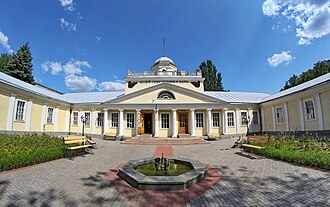
Mykolaiv, located near the Black Sea, has a long history as one of Ukraine’s major shipbuilding centers. Established in the late 18th century, it quickly became a hub for naval construction and trade. Today, Mykolaiv continues its shipbuilding tradition while also focusing on engineering, education, and agriculture. The city has several universities and cultural institutions, including theaters and museums. Parks and riverbanks provide scenic leisure spaces for residents. Economically, Mykolaiv plays a key role in maritime industries and grain exports through its port facilities. Its position at the mouth of the Southern Bug River gives it strategic significance.
Interesting Fact:
Mykolaiv’s shipyards produced vessels for both the Russian Empire and the Soviet Union.
10. Sevastopol (Population: 464,349)
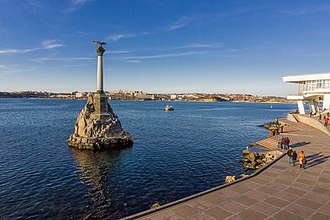
Sevastopol, located on the Crimean Peninsula, is famed for its naval history and strategic port. Founded in 1783, it has long served as a major base for the Black Sea Fleet. The city is dotted with monuments and museums dedicated to its military past, including the Crimean War and World War II. Beyond its strategic role, Sevastopol is also known for scenic coastlines, harbors, and beaches. The city combines military significance with cultural and educational life, hosting universities and theaters. Its unique identity has been shaped by centuries of maritime tradition and geopolitical importance.
Interesting Fact:
Sevastopol is one of the few cities in the world where streets are still marked with plaques commemorating fallen soldiers from World War II.
11. Mariupol (Population: 431,859)
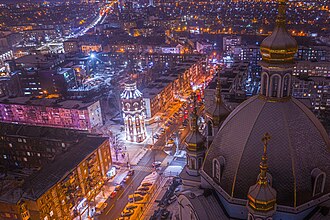
Mariupol, located on the Sea of Azov, has historically been an important port and industrial center. Known for its steel production, the city contributed heavily to Ukraine’s metallurgical output. Its port made it a key exporter of metals and grain. Mariupol also featured wide boulevards, parks, and cultural landmarks such as theaters and museums. The city played a vital role in Ukraine’s economy and regional trade. In addition to industry, Mariupol developed educational institutions and cultural life. Its coastal location made it both a working city and a recreational destination for residents and visitors.
Interesting Fact:
Mariupol’s name means “City of Mary,” reflecting its Greek heritage and founding settlers.
12. Luhansk (Population: 399,559)
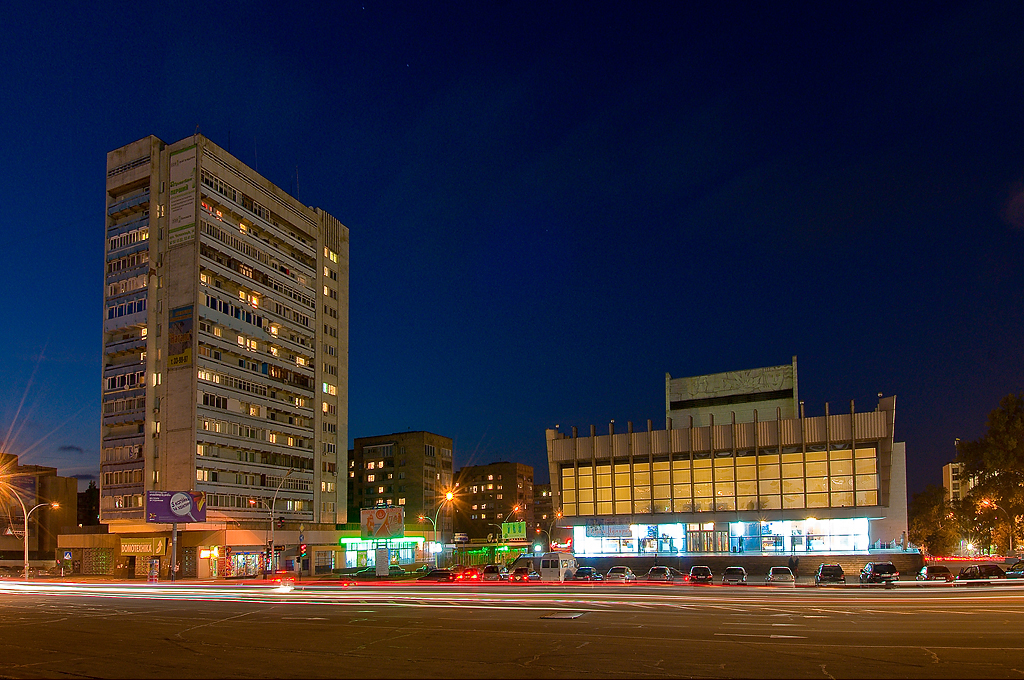
Luhansk, in eastern Ukraine, has deep industrial roots, particularly in coal mining and machinery production. Founded in the late 18th century around an iron foundry, it grew rapidly during the industrial expansion of the 19th and 20th centuries. Today, the city is home to universities, cultural institutions, and theaters. Its industries remain focused on heavy machinery, metallurgy, and energy production. Despite challenges in recent decades, Luhansk retains significance as both an industrial hub and a cultural center of the region. Green spaces, riverbanks, and historical landmarks balance the industrial cityscape.
Interesting Fact:
Luhansk’s industrial growth began with a British-founded ironworks in 1795, giving it international origins.
13. Vinnytsia (Population: 370,601)
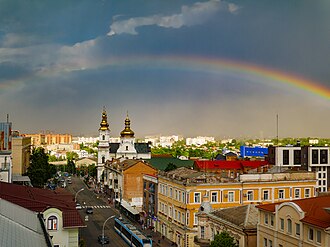
Vinnytsia, situated in central Ukraine, is known for its mix of modern development and historical charm. The city has expanded rapidly as a center for IT, healthcare, and education. Landmarks include the Roshen Fountain, one of Europe’s largest multimedia fountains, and several historic churches. Vinnytsia balances economic growth with a reputation for being one of Ukraine’s cleanest and most comfortable cities to live in. Parks, riverside promenades, and cultural institutions enhance its quality of life. It also serves as a transportation hub connecting different parts of Ukraine. Its growing technology sector has made it a rising star in modern Ukrainian industry.
Interesting Fact:
The Roshen Fountain in Vinnytsia is often compared to those in Dubai and Las Vegas.
14. Makiivka (Population: 340,337)
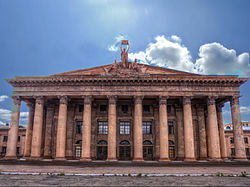
Makiivka, located near Donetsk, has long been a major industrial hub in eastern Ukraine. Known particularly for its coal mining and metallurgy, the city grew rapidly during the Soviet period as factories and mines expanded. Residential neighborhoods developed alongside large industrial plants, creating a city strongly tied to heavy industry. Cultural life includes theaters, museums, and sports venues that provide a balance to its working-class identity. Makiivka also benefits from its close proximity to Donetsk, sharing economic and cultural connections. While the city has faced challenges, its industrial legacy remains central to its character and economy.
Interesting Fact:
Makiivka’s growth accelerated in the 20th century due to large-scale coal mining, making it one of Ukraine’s mining capitals.
15. Simferopol (Population: 336,212)

Simferopol, located in the Crimean Peninsula, has served as an important administrative and cultural center. Founded in the 18th century, it became a hub for trade and governance. Today, Simferopol is known for its diverse population, which includes Ukrainians, Russians, and Crimean Tatars, contributing to its rich cultural fabric. The city has universities, theaters, and museums that reflect this heritage. Economically, it functions as a transportation hub for Crimea, with roads and railways converging there. It is also known for its proximity to vineyards and agricultural areas, making it both a cultural and economic heart of the region.
Interesting Fact:
Simferopol’s name means “City of the Common Good,” highlighting its role as a central meeting place.
16. Chernihiv (Population: 285,234)

Chernihiv, one of the oldest cities in Ukraine, is steeped in medieval history. Located in northern Ukraine, it was once a powerful center of the Kyivan Rus. The city is famous for its ancient churches and monasteries, some dating back to the 11th century. Chernihiv also has beautiful parks and the Desna River running nearby, offering scenic views. Today, it is a regional administrative and cultural hub with universities, theaters, and museums. While not heavily industrialized, it balances history with modern life, attracting visitors interested in Ukraine’s deep past and Orthodox religious architecture.
Interesting Fact:
Chernihiv’s Transfiguration Cathedral, built in the 11th century, is among the oldest in Ukraine.
17. Kherson (Population: 283,649)
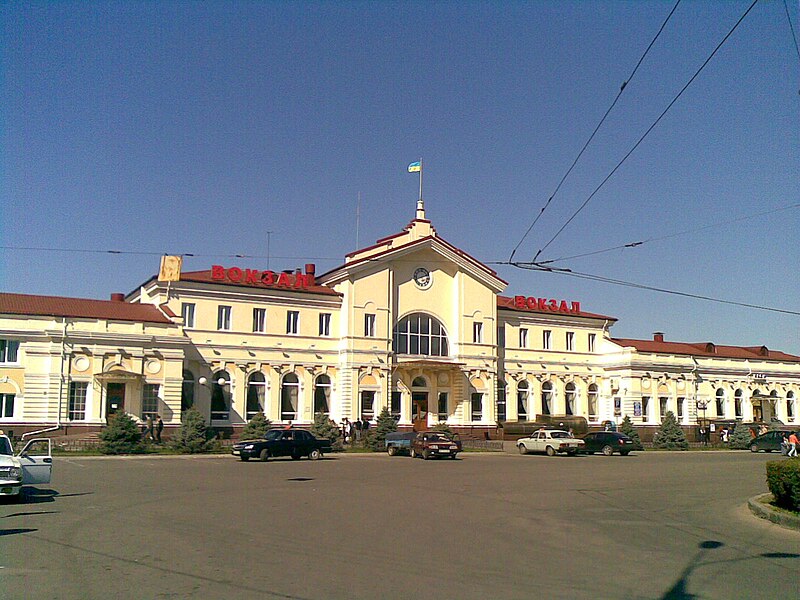
Kherson, located along the Dnipro River near the Black Sea, has historically been a major shipbuilding and port city. Founded in the late 18th century, it quickly became a naval base and trading hub. The fertile lands surrounding Kherson also support agriculture, particularly grain production and exports. The city is home to cultural institutions such as theaters, art galleries, and universities. Its riverside location makes it a scenic place, with promenades and parks enhancing daily life. Kherson continues to play a key role in Ukraine’s maritime industries, trade, and agricultural economy.
Interesting Fact:
Kherson was one of the first Black Sea ports established after Ukraine came under Russian Empire control.
18. Poltava (Population: 283,402)
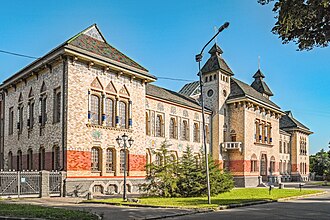
Poltava, located in central Ukraine, is remembered as the site of the famous 1709 Battle of Poltava, a turning point in European history. Beyond its historic role, the city has grown into a regional administrative and cultural hub. It is known for its educational institutions, including universities, and cultural landmarks like museums and theaters. The cityscape features wide boulevards, monuments, and green spaces. Poltava also has industries including food processing and light manufacturing. Its mix of history, education, and culture make it one of Ukraine’s most notable regional capitals.
Interesting Fact:
The Battle of Poltava in 1709 marked the rise of the Russian Empire as a dominant power in Europe.
19. Khmelnytskyi (Population: 274,582)
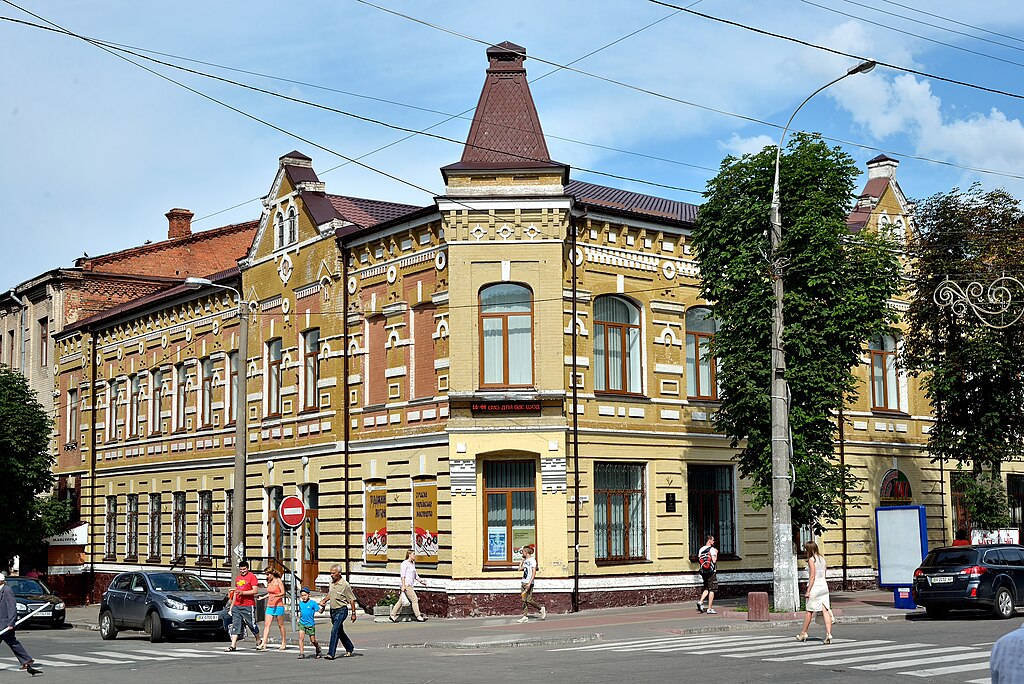
Khmelnytskyi, located in western Ukraine, developed significantly in the 20th century as an administrative and industrial city. Named after Bohdan Khmelnytsky, a famous Ukrainian Cossack leader, the city combines historical resonance with modern growth. It has industries ranging from textiles to machinery, and it also serves as a commercial hub for the surrounding agricultural region. Cultural life includes theaters, museums, and festivals that highlight Ukrainian traditions. The city’s relatively recent growth has given it a more modern layout compared to older Ukrainian cities, while still retaining historic roots.
Interesting Fact:
Khmelnytskyi was known as Proskuriv until 1954, when it was renamed after the Cossack leader.
20. Cherkasy (Population: 272,651)
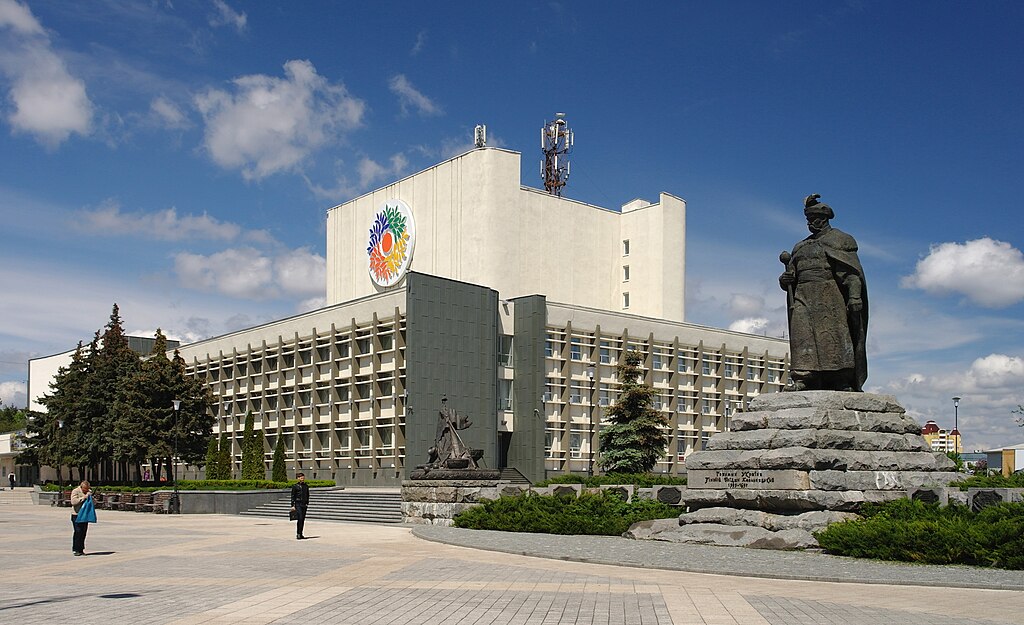
Cherkasy, located on the banks of the Dnipro River, is both an industrial and cultural city. It grew rapidly in the 20th century as chemical and machinery plants were established. Today, Cherkasy remains a regional center for industry and education. Its position on the Dnipro provides beautiful river views, beaches, and recreational areas. The city is also noted for its contribution to Ukrainian literature and culture, with monuments and museums dedicated to prominent figures. Cherkasy blends modern industry with cultural pride, making it a key city in central Ukraine.
Interesting Fact:
Cherkasy is associated with Taras Shevchenko, Ukraine’s national poet, whose legacy is celebrated across the region.
21. Chernivtsi (Population: 265,471)
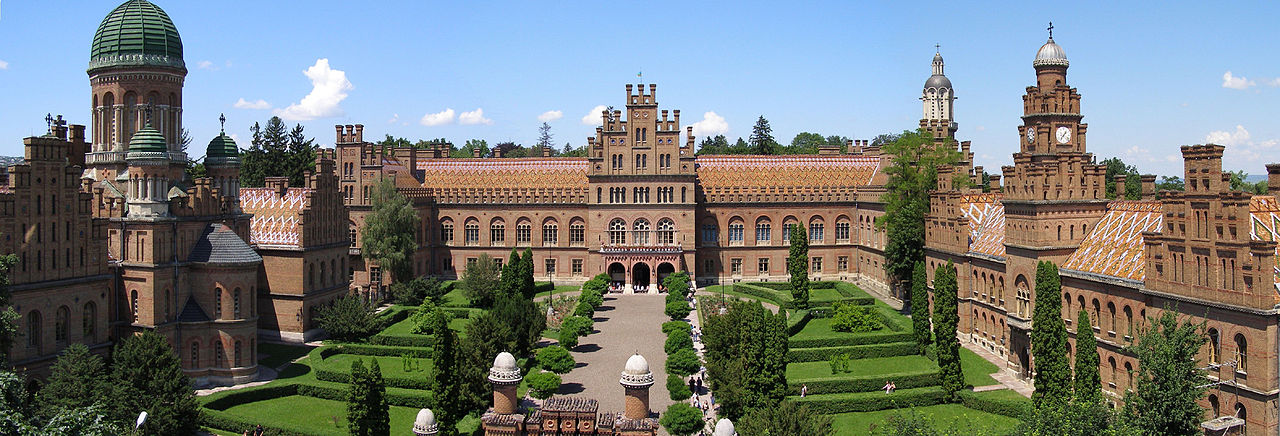
Chernivtsi, often called the “Little Vienna of Ukraine,” has a distinct European charm. Located in western Ukraine near the Romanian border, it boasts a rich cultural history shaped by Austro-Hungarian influences. The city is known for its stunning architecture, particularly the Chernivtsi National University, a UNESCO World Heritage Site. Chernivtsi has long been a center for education, literature, and the arts. Cafés, theaters, and museums enrich daily life, while its multicultural background adds unique traditions. Today, it is one of the most picturesque and culturally rich cities in Ukraine.
Interesting Fact:
Chernivtsi National University was built in the 19th century and is one of Ukraine’s architectural masterpieces.
22. Zhytomyr (Population: 263,507)
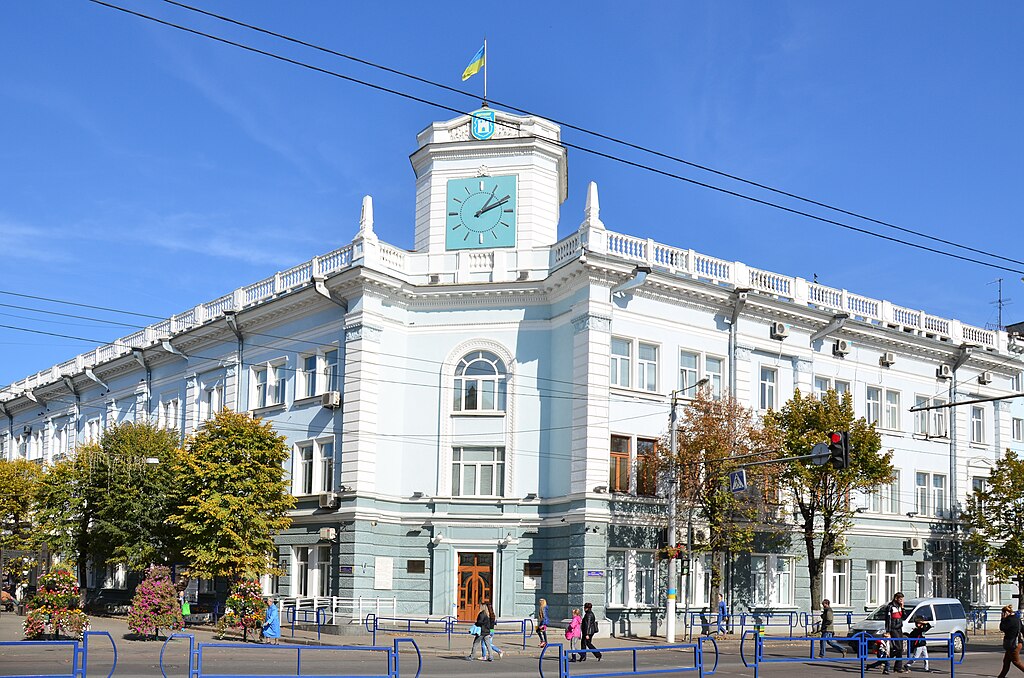
Zhytomyr, situated in northern Ukraine, is one of the country’s historic cities with roots dating back to the 9th century. It has long been an important trade and administrative center. Today, Zhytomyr is known for its engineering and textile industries as well as its cultural contributions. Landmarks include theaters, museums, and historical churches. Green spaces and forests surround the city, providing a natural backdrop. Zhytomyr is also linked to the space industry, with a museum dedicated to rocket designer Sergei Korolev. The city blends history, industry, and science.
Interesting Fact:
Zhytomyr is the birthplace of Sergei Korolev, the lead Soviet rocket engineer during the Space Race.
23. Sumy (Population: 259,660)
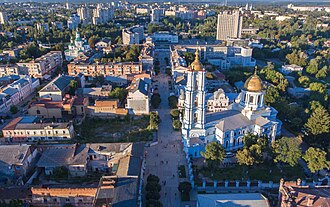
Sumy, located in northeastern Ukraine, was founded in the 17th century as a fortress settlement. Over time, it became a regional trade and cultural hub. Today, Sumy is known for its educational institutions, particularly Sumy State University, and for its cultural life, which includes theaters, museums, and festivals. Industry focuses on machinery, chemicals, and food production. The city also has a reputation for being green, with many parks and tree-lined streets. Its blend of academic, cultural, and industrial life makes it a well-rounded regional center.
Interesting Fact:
Sumy’s coat of arms features three hunting bags, a symbol linked to its founding settlers.
24. Rivne (Population: 245,289)
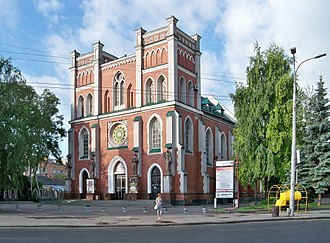
Rivne, in western Ukraine, developed significantly in the 20th century as an administrative and industrial hub. It is known for industries such as chemicals, machinery, and textiles. Cultural life is supported by theaters, museums, and universities. Rivne also plays a role in Ukraine’s energy sector, with its proximity to a nuclear power plant. Green spaces, churches, and historical landmarks enrich the cityscape. While not as historic as some western cities, Rivne is modern, dynamic, and important for the region’s economy and education.
Interesting Fact:
Rivne was historically part of the Polish-Lithuanian Commonwealth before becoming a key Ukrainian city.
25. Horlivka (Population: 241,106)
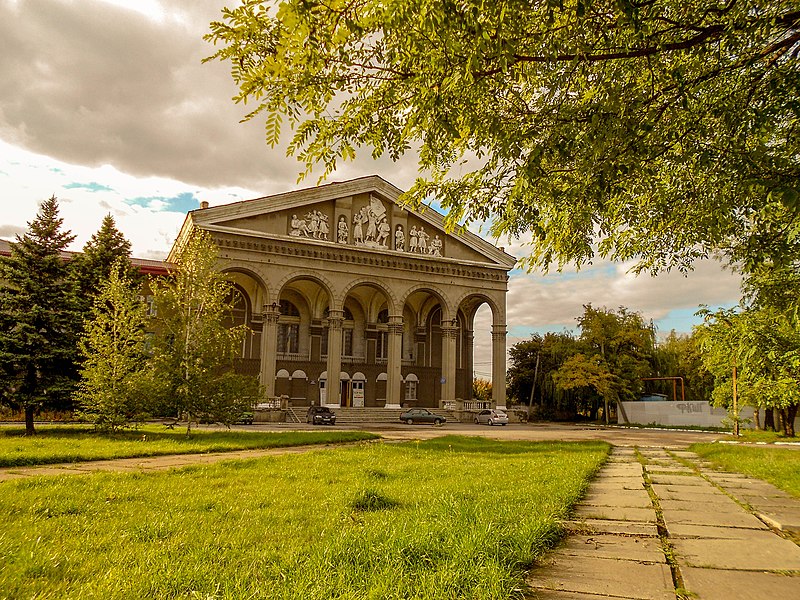
Horlivka, located in eastern Ukraine, is another city closely tied to coal mining and heavy industry. Founded in the 19th century, it grew alongside the expansion of mining and metallurgy. The city also has educational institutions, including technical colleges, supporting its industrial workforce. Green areas, cultural centers, and residential neighborhoods balance its industrial identity. Horlivka’s economic strength has long been linked to natural resources, particularly coal. It remains a symbol of Ukraine’s industrial heritage and resilience.
Interesting Fact:
Horlivka’s name comes from Pyotr Gorlov, the Russian engineer who oversaw its early coal mines.




